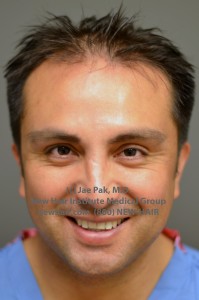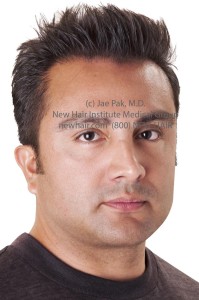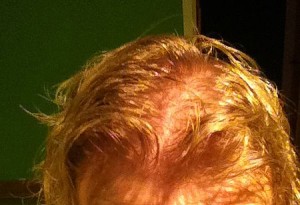How Do You Know if Your Hair Transplant Doctor Has a Good Track Record or Review?

That is the big question and you should know how to manage the hair transplant doctor selection process.
These are the things you should do before selecting a hair transplant doctor. There is uncertainty in the field as some doctors do not get the results that they should and you don’t want to be on the receiving side of that statement so research the doctors and the medical group you should be interviewing.
Our medical group (the New Hair Institute) has pioneered most of the new technologies of the past 20 years. These technologies included (a) The use of small grafts in large quantities instead of the large grafts which gave the appearance of ‘dolls’ hair in 1992, (b) follicular unit transplant first introduced in 1995 which used the natural growing units of 1-4 hairs each found in the human scalp (follicular units), published 1995, (c) Follicular Unit Extraction pioneered between 1996-201 and first published by use in a peer reviewed medical journal in 2001, (d) Scalp Micropigmentation introduced by us in 2010 and published in various medical journals and text books since. What we do to help you, the buyer, is we hold Open House Events every month where patients can come and (a) meet with the doctor, (b) meet with other patients who had their work completed, (c) see a procedure as it is being done. We believe that seeing is believing and that a good buyer will know if they are being ‘led down the garden path’ to disaster or if it what we represent is real. Our patients have been coming to these open house events for over 20 years and what you will see here is what you will be getting with the results that are shown.
There are ‘for profit’ networks or forums that promote doctors under the “guide” that their list of doctors are the good doctors inferring that if the doctor is not on their list, they may be ‘bad’ doctors. Unfortunately, these “networks” or “organizations” or “forums” or “coalitions” have their own issues and flaws. For starters, these organizations are there to make money! To put it bluntly, the doctors have to pay for being on these lists and the fees amount to thousands of dollars per year. It’s actually a clever way for these forums (networks) to make millions of dollars as they endorse a doctor and post the doctor in the recommended list of doctors. The doctors’ results are never evaluated, but feedback from dissatisfied patients get posted to alert prospective patients that there may be problems with those doctors posted by unhappy patients. They create an image of being an “independent” source for endorsements. It is a Faustian bargain for the doctors.
I generally advise prospective patients to go to the internet and look up the doctor on the official licensing agency. In California is is the California Medical Board. If the doctor has been charged for any reason and found guilty of any infraction, they will be listed on this website.
The buyer has the burden to check out the doctors in their area by asking a lot of questions, researching the internet, Yelp and other such sites, the Chamber of Commerce in the area and go to the Board of Medicine which controls the license for doctor (for California it is the California Medical Board). These boards will make public, complaints about the doctor and disciplinary actions taken against the doctor, a worthy effort in your due diligence process.
The International Society of Hair Restoration Surgery (ISHRS) is a non-profit medical association of over 750 physicians specializing in hair loss with defined skills in the hair transplant and hair restoration field. To be a member you need a medical degree and the annual dues. You do NOT need special training in hair transplant surgery. The ISHRS is the most well known and respected organization for physicians with the most members and its focus is on medical education and we participate every year in their educational programs. There is no discipline or authority to oversee the practices of its members. To the consumer (patient) the doctor’s membership to the ISHRS just means the doctor is paying his dues annually and keeping abreast with the science of hair loss and therapies to treat hair loss. At the annual and regional meetings, the ISHRS enables doctors to keep up to date with the rest of the specialists in the field. Despite the lack of accreditation or oversight, the ISHRS is considered “the” main organization for hair transplant surgery.
The ISHRS has no disciplinary powers as it depends upon its members to promote medical education. It has the most membership of hair transplant surgeons in practice. It’s an outlet for sharing and presenting new information and research among surgeons with its yearly meetings..
There is a group called the American Board of Hair Restoration Surgery (ABHRS). There were 154 members as of 2010. To become certified by this society, there is a $400 application fee and $1900 testing fee. The doctors in this group must present two reference letters, have 100 cases logged and pass the written examination. The ABMS does not recognize ABHRS.




